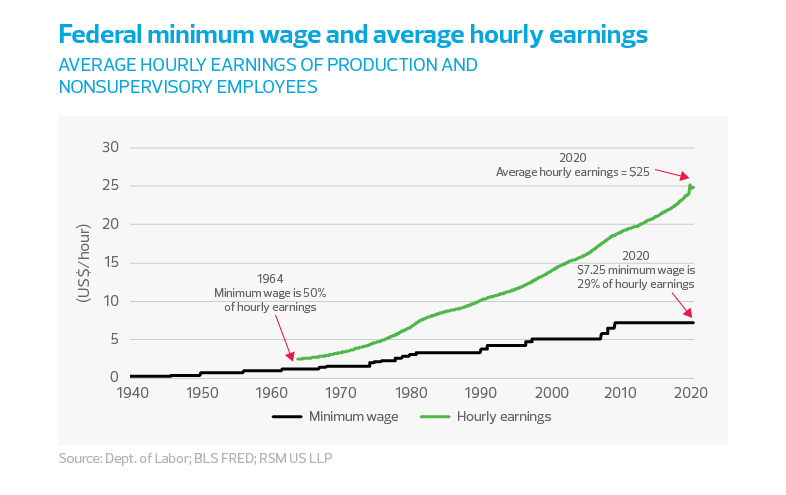Although some cities and states have imposed higher minimum wages, the federal minimum wage has not kept up with the times. Fifty years ago, people working at the minimum wage were receiving a salary that was 50% of average hourly earnings. Today, the $7.25 per hour minimum wage is 29% of the $25 average hourly earnings of hourly workers. It is highly likely that in 2021 the incoming Biden administration will put forward legislation looking to lift the national minimum wage over a period of years as a step to address economic inequality in the country. This would complement local policies around the 20 major metro areas that are moving toward a $15-per-hour minimum wage.
According to the BLS analysis, people working at the federal minimum wage tended to be younger and women, working in food preparation in the leisure and hospitality industry. The ethnicity of minimum wage workers was not different than that of the general population.

Though the percentage of workers receiving the minimum wage has continued to diminish since the 1980s, there were upticks during recessionary periods that we attribute to furloughs of salaried persons. We can expect the same when the data for 2020 is released.


